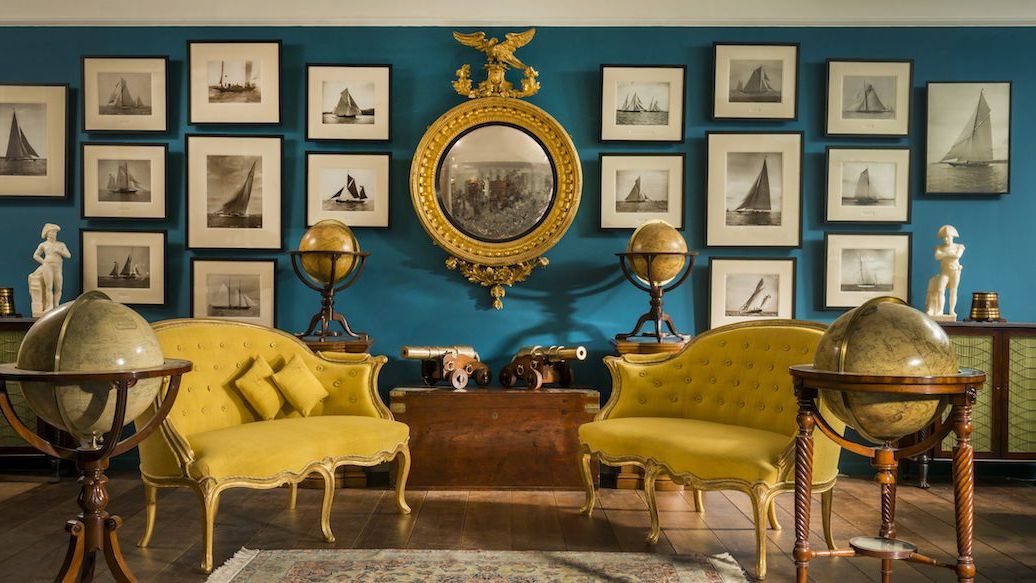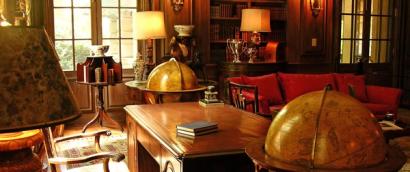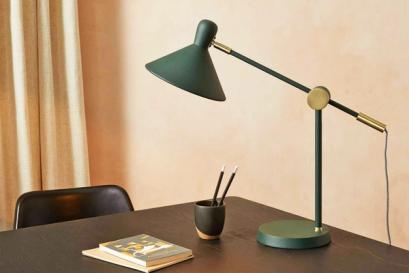

Everything you need to know about buying antique furniture
Investments like these should come once in a lifetime, gentlemen
Words: Gentleman's Journal
Furniture whose design reflects the artistic values of a given era, forms a link with the past, stands as testament to the artistry of craftsmen and, more simply, is of sufficient quality to have stood the test of time. A celebration of the old ways of craftsmanship – Helen Linfield, of fine antique dealers Wakelin & Linfield, posits: “The past has always been a source of great value and inspiration to designers. There will always be a natural drive for innovation and change but the best pieces of antique furniture will be able to weather the storm of faddish fashion and economics.”
Antique furniture can, however, seem a complex world – one in which a plethora of styles and problems of provenance swirl together. In order to navigate this exciting but at times challenging world, we sought advice from members of LAPADA, the Association of Art & Antique dealers, who can be identified by the symbol of a golden chandelier, which is displayed in their shops and alongside their wares at fairs. Now encompassing more than 550 members, each of which must meet rigorous and exacting standards of experience, quality of stock and knowledge of their subject. Combined, its members cover everything from antiquity to the most contemporary of designs.
Wick Antiques continental art nouveau mahogany and mother of pearl arm chairs
For a prospective buyer looking to make a new acquisition, there is sometimes a temptation to select furniture purely for investment purposes, rather than individual taste. This involves hedging your bets on a positive change in the market, which can be a risky game – even the experts sometimes come up flat when making such predictions. To ensure that you won’t regret a purchase, it is usually better to buy furniture because you truly like it. Helen Linfield offers some sage advice on the matter: “Once you have established what period or style pleases you most in terms of design and wood, then the next step is to look for pieces which are well made and be guided by the craftsmanship, colour and patination. If the piece is aesthetically pleasing and you feel it will give you pleasure to look at every day then this is an excellent starting point as the pleasure you derive from it in the future will be your investment.”
For the novice collector, perhaps the most prevalent (and well-founded) fear is the possibility of parting with a large sum of money only to later discover that the piece in question is in fact a convincing imitation. When considering an item whose provenance is lacking or absent altogether, a prospective buyer shouldn’t be afraid to give the item a thorough inspection. A respectable antiques dealer knows that this is part of the process, and should have no qualms with you doing so; anyone showing reluctance without good reason, on the other hand, should raise a few doubts. Harriet Chavasse, of Thakeham Furniture Ltd, offers this guide to investigation:
Graham Smith Antiques Regency Gilt Wood Convex Mirror
First, look for anything that shouldn’t be there; are the top, back or sides made of plywood? Plywood was not used in furniture making until the 1930s, so would never have been incorporated into a Georgian piece. Similarly, chipboard, staples or Phillips screws are evidence of later construction. Antique chairs were always made with mortice and tenon joints, so a Georgian chair jointed by dowels is not Georgian!
- The next thing to do is turn the piece upside down (where possible!). If it is a large table, such as a diner, I often advise people to take a torch to have a good look underneath. The first thing to look for is almost part of the ‘patina’ of the top: if a table has been used for two hundred years or so there will be a waxy rim around the under edge where people’s fingers have touched the table. This is near impossible to reproduce – if the underside is too clean, or there are stain brush marks, steer clear.
- If the piece is veneered, as a general guide, the thicker the veneer the older the piece is. Veneers were handsawn until well into the 19th century, so were by necessity coarsely cut. They were glued down [always with ‘Scotch’, or animal glue] and then sanded and polished in situ. Veneers became thinner and thinner as mechanisation increased, and by the 20th century they were literally ‘paper’ thin.
- Dates are important when looking at screws and nails. Screws as we know them were not introduced until around 1675 and were handmade well into the mid 19th century. A handmade screw has little or no taper, the slot on the head is very rarely centrally aligned and the handmade screw has a much shallower spiral than the machine made variety. Nails were square cut, with round wire nails not used until about 1900.
- Finally, run your hand over the table top: a new top will have a new finish, and will not be smooth and silky to the touch as with original patination; the grain may be raised, or the edges oddly sharp for a piece of age. As with all areas of antique buying, this is where experience counts; but follow your instincts: a piece that simply ‘feels’ wrong often is, and gradually your eye will become tuned in.
Few would deny that a highly decorative piece such as a cabinet, lavishly decorated and many hundreds of years old, represents a highly desirable and impressive piece of furniture. Yet it can pay to keep broad horizons, whether that means across time or category of furniture, as
Alan Hatchwell of Hatchwell Antiques explains: “ ‘Mid-century’ has gone bang, and carried with it is the meteoric rise of interest in large scale naval and military binoculars and aeronautical wonders: wind tunnel models and propellers – specialised but exciting and dynamic fields. Learn what to expect from a great object: the design and the use of carefully chosen timber. The Scandinavians have always been exceptional in their choice and use of fine woods and veneers, and the latest style to become popular, Danish, does not disappoint in this area. Rosewood is a particular favourite of mine, especially when sun-bleached to a golden hue.”
When investigating any upholstered items, take time to inspect it thoroughly, taking particular care to find out what lies beneath the cover. Look for signs that it has been recovered, restored or refurbished – the original wool stuffing of a chair may have been replaced with more modern but less superior materials, such as foam. Harriet Chavasse of Thakeham Furniture Ltd sings the praises of old-fashioned craftsmanship:
“What counts is underneath the upholstery!” When you look underneath the upholstery, antique sofas and chairs could not be more different from modern pieces. A new sofa, even from a high quality supplier, will be constructed of chipboard, stapled together and covered in foam. They are not built to last. Each joint is handmade, and the frame skilfully shaped to support the upholstery. Modern furniture makers talk about “ergonomics” – the 18th century craftsmen were already practising it!”
Wakelin & Linfield Regency period mahogany and brass inlaid sabre legged window seat
When on the hunt for the first time, visit several dealers, pick one or two that you like best and begin to build a relationship with them. Fruitful, as they learn your tastes and will prove an invaluable advisers, and may well source some some once-in-a-lifetime opportunities.
Hayloft Danish Rosewood desk – Svend Madsen
The Tudor period refers to the 200-odd year passage of history in which the Tudor dynasty reigned over England. The furniture of the time was Gothic in style, with one easily identifiable characteristic being linenfold panelling, in which a craftsman would carve in a manner that imitated folds of material. The era came to a close with Elizabeth I’s ascendancy to the throne, which hailed the beginning of the so-called Golden Age. Stylistically, influences from the Renaissance became increasingly apparent, with the addition of scrolls, Tudor roses and an advancement in the creation of inlays of differently coloured and patterned woods.
Oak furniture continued to reign supreme during the 17th century, but walnut became increasingly popular during the Restoration period (1660-1689). The reigns prior to the Commonwealth saw these solid oak pieces – still richly carved although employing more and more the classical motifs of the Renaissance – become lighter, with an elongation of the bulbous forms of the previous century. The same century saw the simplification of furniture under the Puritan Commonwealth which was then reversed by the Restoration; the continental craftsmen accompanying Charles II were masters of veneering (using a thin layer of decorative grain over a carcass in another wood) and marquetry. The accession of William and Mary continued the influence of Continental Baroque.
Wakelin & Linfield Early 18th century painted Italian commode
The 18th century ushered in the Rococo, a whimsical style often characterised by references to the natural world and including asymmetrical elements, the latter having grown out of the heavier Baroque. The English response to the style can be seen in the early works of the famous Thomas Chippendale – who also covered, amongst other styles, the recurrent trend of Chinoisserie. Mahogany, an exotic hardwood brought home from the new British colonies in the West Indies, allowed for crisper carving than walnut, and characterised the period from 1730. Chippendale’s later designs embraced the Neoclassicism so systematically brought to England by Robert Adam, and it is perhaps the late Georgian period’s mastery of this style that is most notable in English furniture. As its name suggests, it looked to ancient Greece and Rome for its forms and decorative motifs.
A pair of Ceylonese Sutherland tables, from Wick Antiques LTD
It should be noted that “Regency style” is often used to cover not only the period of the Regency itself (1811-1820) but also George IV’s subsequent reign (1820 – 1830), and drew inspiration from Greek, Egyptian and Gothic styles. This interest continued to be explored well into Victorian times, with various Revivalist styles – including Pugin’s championing of the Gothic – showcased to an international audience at The Great Exhibition of 1851.
The well-loved Arts and Crafts style was a Victorian development from c.1860, with its most famous exponent, William Morris, holding up the value of handcraftsmanship in the face of industrialisation. By the end of Victoria’s reign, the sinuous forms of Art Nouveau, more entirely exemplified on the Continent, had been introduced.
Streamlined and glamorous, the design language of Art Deco is instantly associated with the post WW1 period. Jeroen Markies, of Jeroen Markies Art Deco, explains:
“Art Deco was a period of sumptuous decadence, particularly in the 20’s-30’s, with furniture design harmonising with a luxurious lifestyle by use of stunning veneers, clean lines and attention to detail – without compromising on practicality. It is a style that complements many periods of architecture and this is the reason why it is, even now, a highly sought after style when considering furnishing, mirrors and decorative arts for interior design.”
Visit the LAPADA Art & Antiques Fairs in Berkeley Square, Mayfair from 13th – 18th September 2016.
lapada.org – the online marketplace for sourcing authentic art and antiques from trusted LAPADA-accredited dealers all year around.


